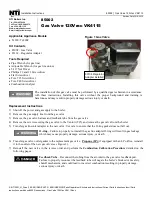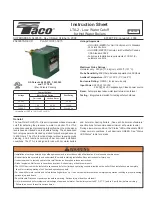
11
(b) Earth lead to burner not connected.
(c) Loose connections on probe lead or earth lead in junction box, control panel or plugs and sockets.
(d) Faulty Control box.
(e) No earth connection on incoming supply.
Note: The probe circuit may be tested with a micro ammeter connected in the probe lead. A reading of al lest
10 micro-amps should be recorded when the burner is alight.
5. Pilot stage lights. Main burners do not light. Control box does not lock out.
(a) Faulty connections to main valve.
(b) Faulty main gas valve.
(c) Faulty control box.
6. Noisy burner ignition
(a) Improper distance between electrode and burner.
(b) Faulty electrical connection of the electrode.
(c) Low gas pressure at the burner.
11.2
All Models
1. Presence of flue gases in the room.
(a) Flue size inadequate.
(b) Restriction in the flue.
2. Presence of unburnt fuel in the room.
(a) Boiler needs cleaning.
(b) Insufficient room ventilation.
3. Early soot formation in the boiler.
(a) Excessive consumption.
(b) Insufficient air supply.
4.
Condensation
(a) Insufficient boiler output
(b) Boiler control thermostat setting to low.
(c) Main burner pressure to low.


































